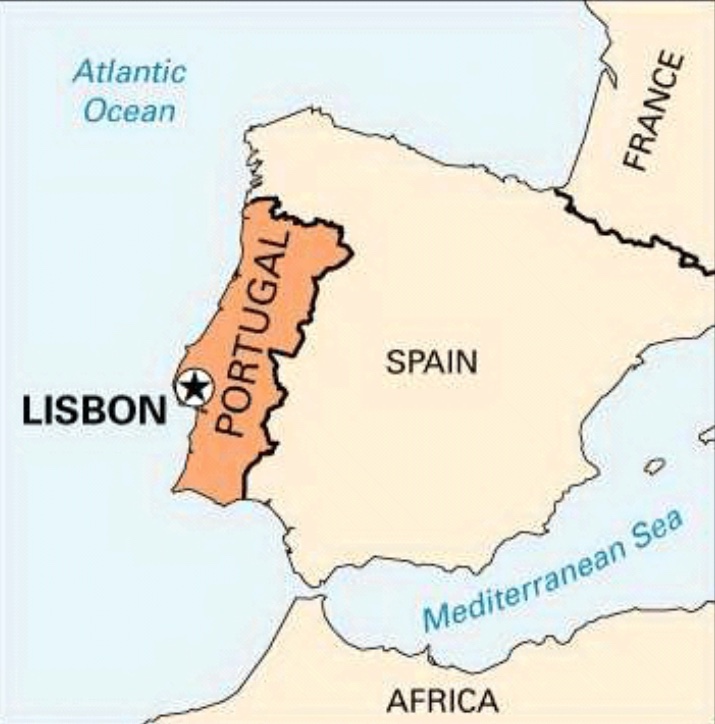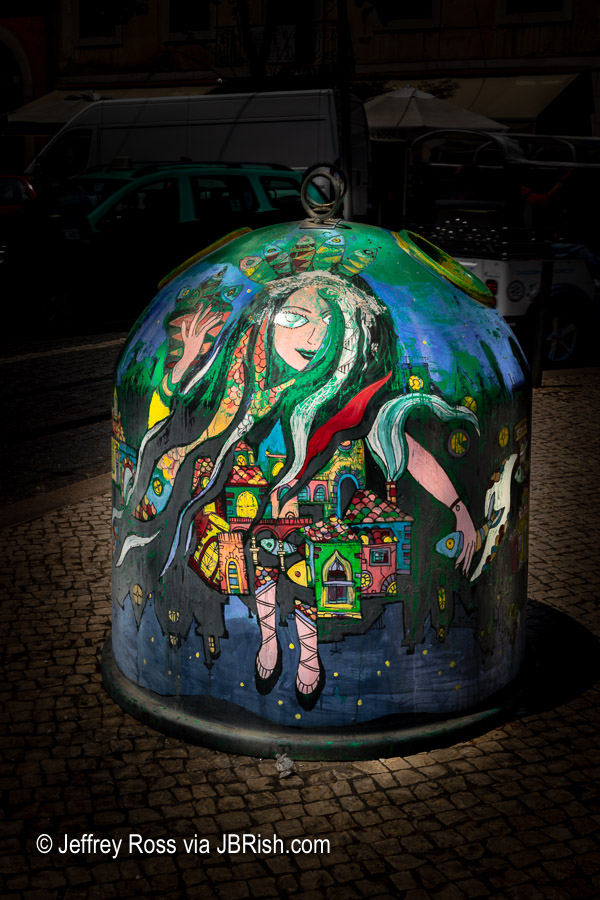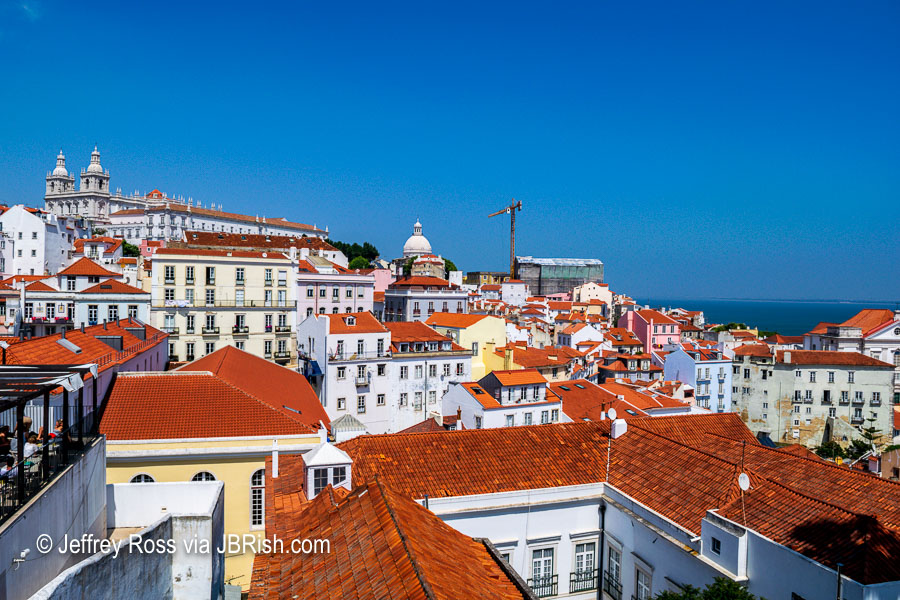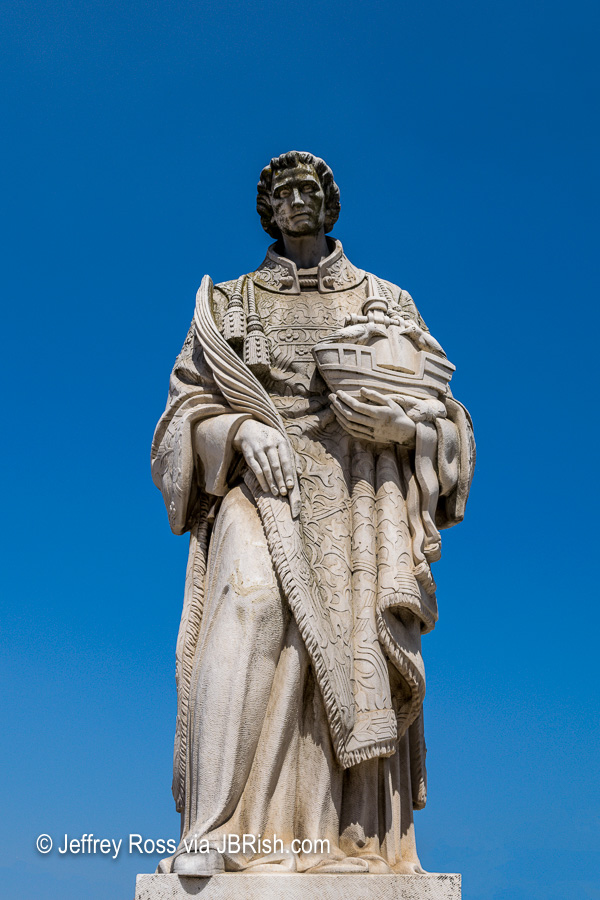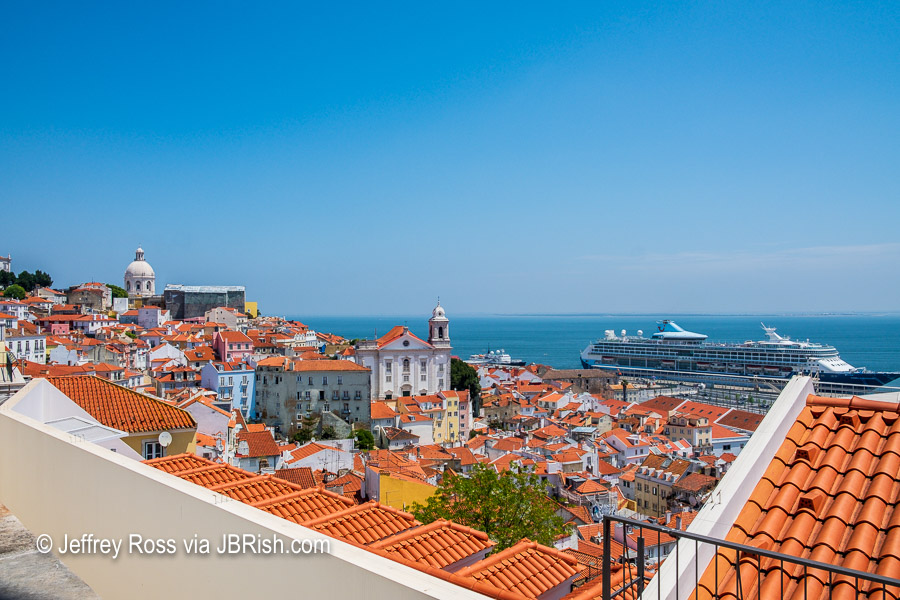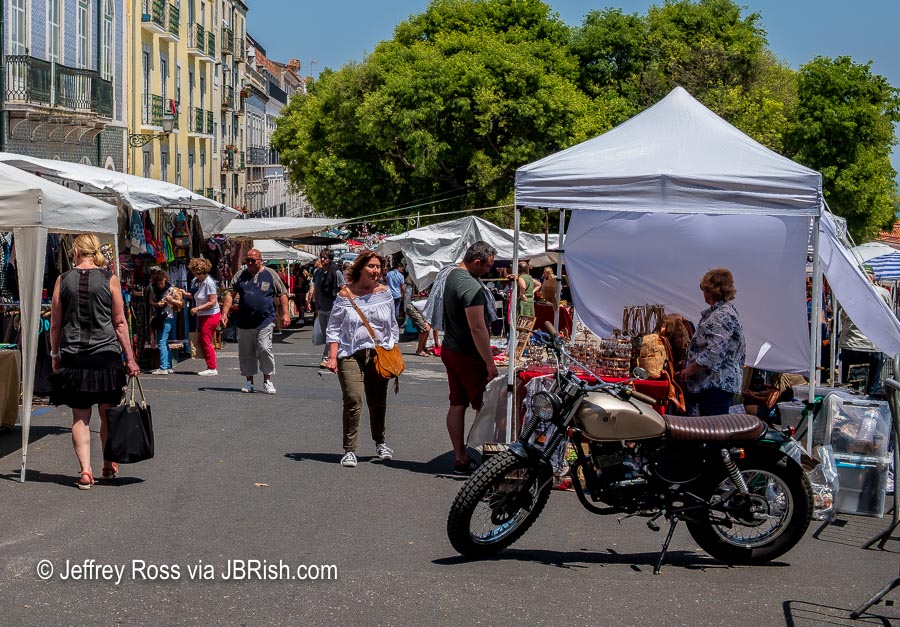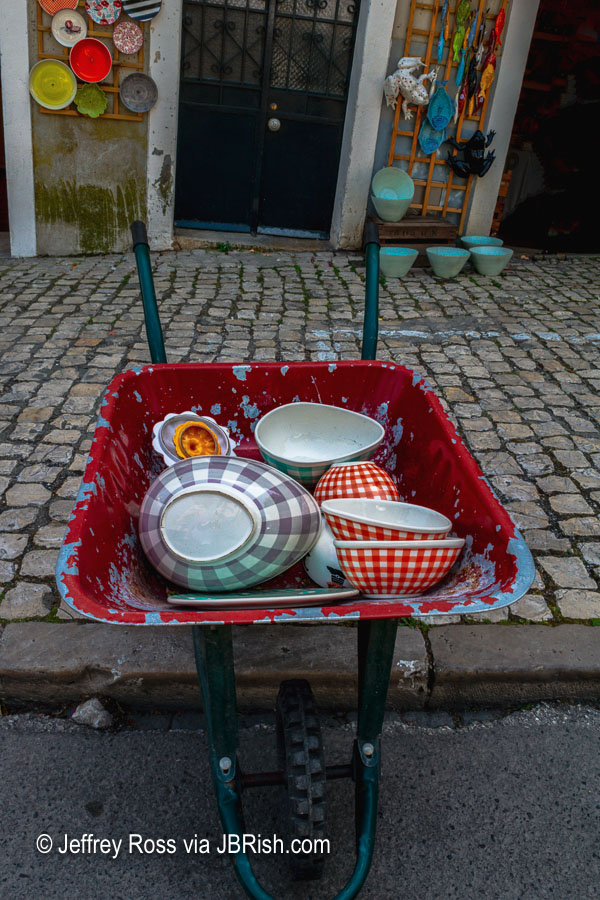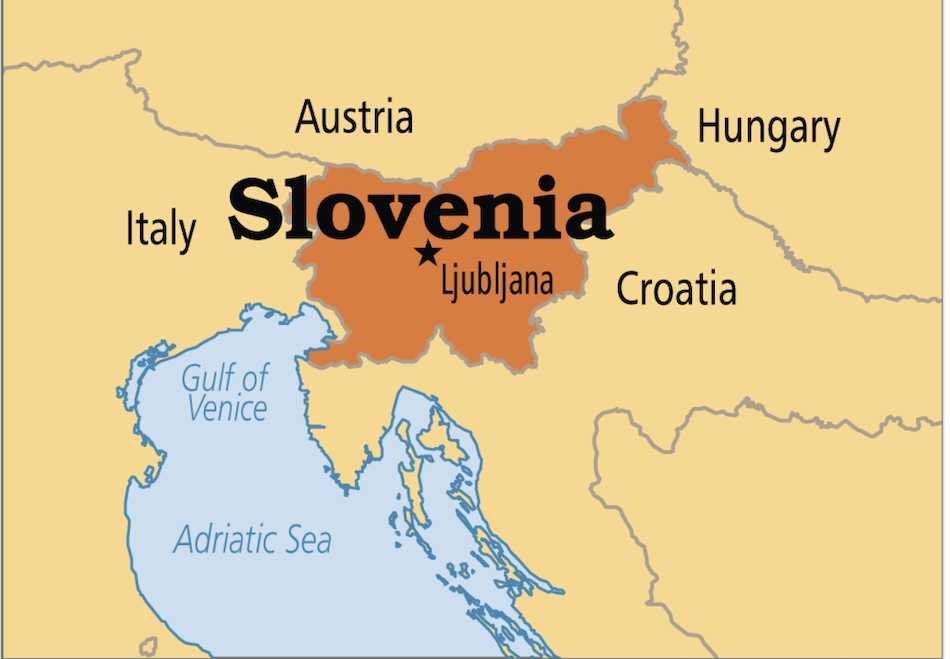
Map Courtesy of fotolip
I must confess that I had never heard of Ljubljana, the capital of Slovenia, until I decided to travel to Croatia and surrounding countries. Apparently there were many others who had experienced Ljubljana because it was named the “European Best Destination 2022.” *
The city has developed a reputation as one of the most environmentally-friendly, livable capital cities of Europe. “Old Town” restricts automobile traffic which encourages pedestrians and cyclists to stroll through the center square or along the banks of the Ljubljanica River.
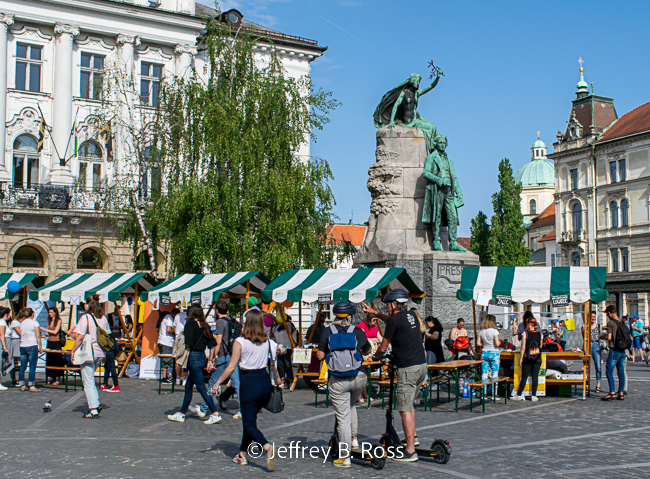
Indicative of the character of the city, a statue of France Prešeren, Slovenia’s most famous romantic poet, sits in the market square.
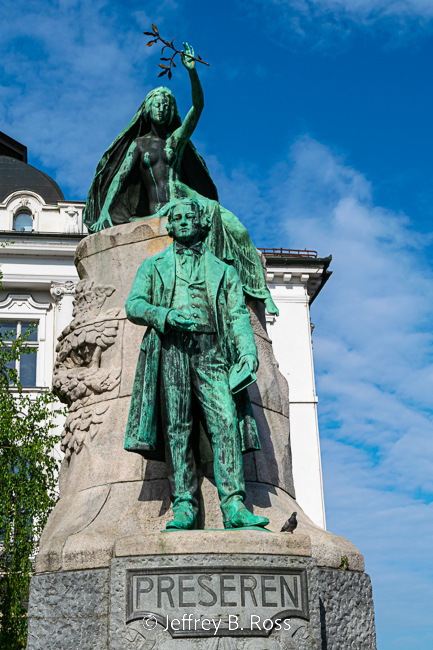
Flowing into the heart of the city is the “serene” Ljubljanica River with its sculptured bridges, cafes, restaurants, Central Market and other gathering venues. There is a lengthy walkway for those who want a peaceful stroll while viewing historic architecture.
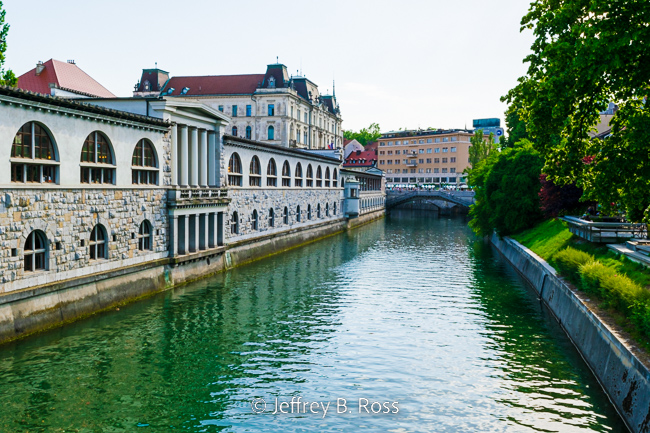
Experienced travelers know that a competition to host the best tribute to love by allowing “love locks” to be prominently displayed in public has developed among European cities and Slovenia is no exception. The Butcher’s Bridge serves as Ljubljana’s entry.
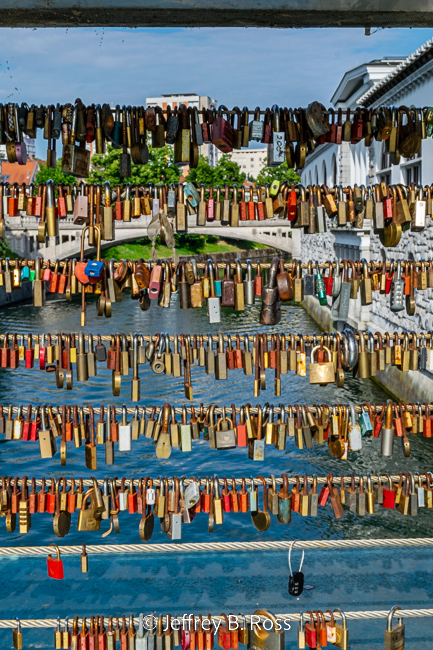
Walking along the Ljubljanica River path brings visitors to the interesting Dragon Bridge with beautiful large dragon statues at all corners of the structure.
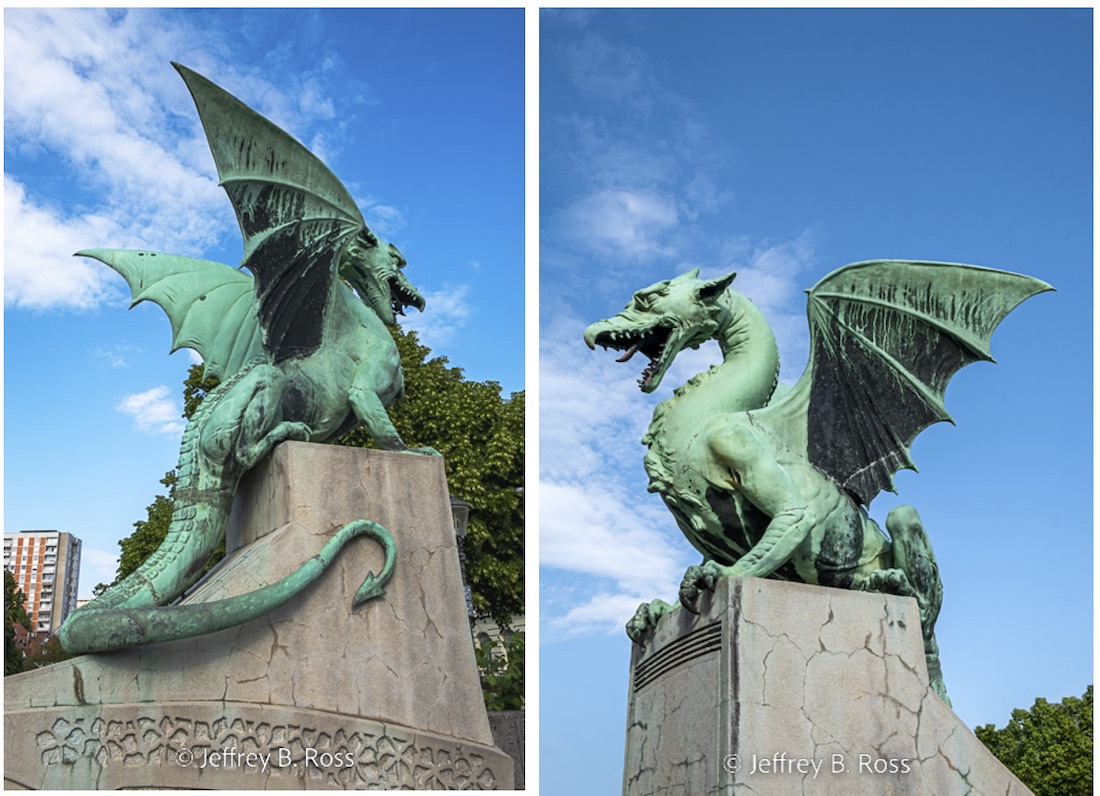
Legend has it that Jason (of Jason and the Argonauts) was the founder of Ljubljana and during one of his exploits he slayed a dragon that was living in the marshlands near the Ljubljanica’s source. The dragon has become one of the symbols of Ljubljana.
Read more about the dragon connection HERE and HERE

Another interesting area to visit just a short walk southeast of the “three bridges”is the Town Hall Square with the interesting architecture of the Town Hall and Francesco Robba’s Narcissus Fountain.
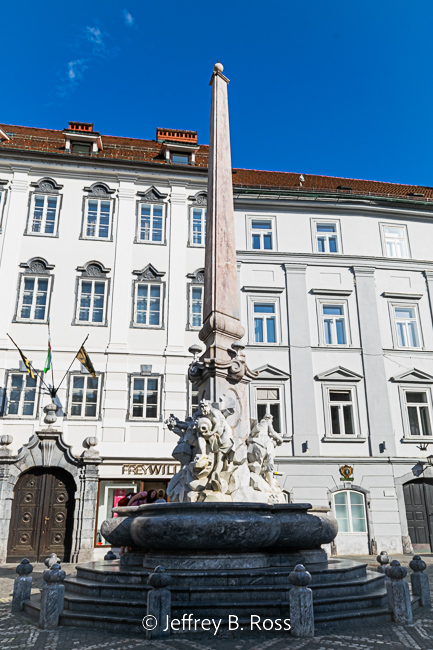
Another of the main attractions is Ljubljana’s hillside castle.
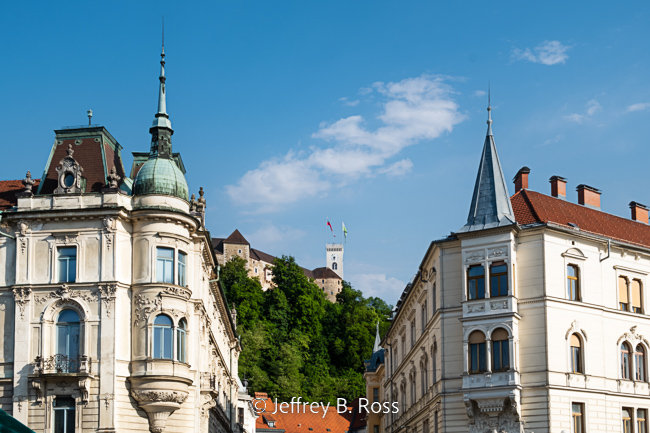
One way to get to the hilltop fortress is to take the funicular…
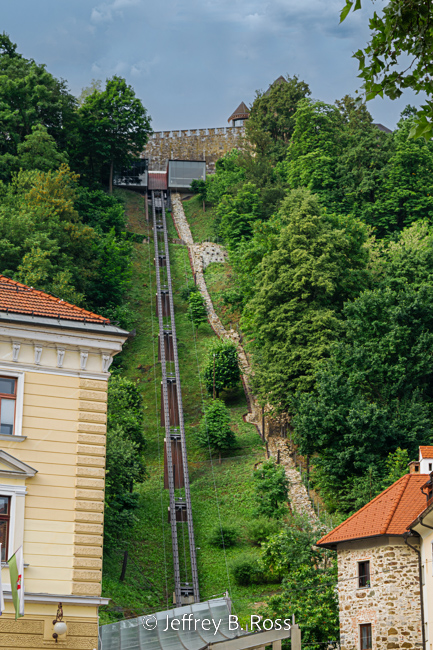
and as we made our way to that transport, we passed the puppet theater with a most unusual drinking fountain for this location.
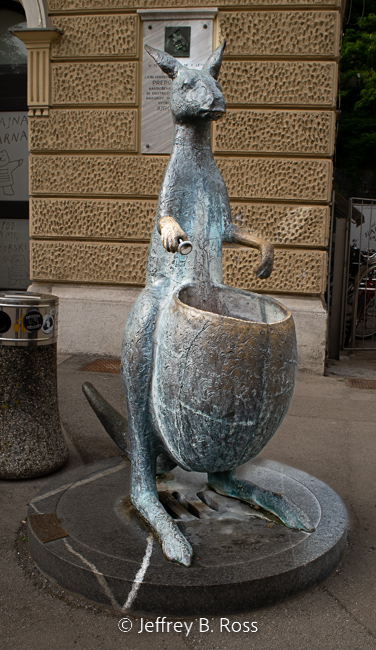
The Alfred N. drinking fountain designed by academy sculptor Mirko Bratuša is the author’s first public work [usually running during warm weather, but not this day]
The castle in its original form dates back to the twelfth century, but has undergone extensive renovations and modifications. It is now considered a “modern castle” which serves as a cultural hub for the city.

Visitor’s entrance to the castle
Alert visitors may find another of Ljubljana’s dragons here as well.
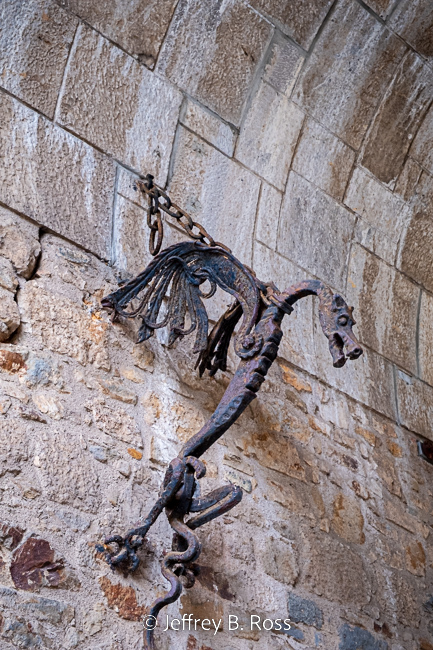
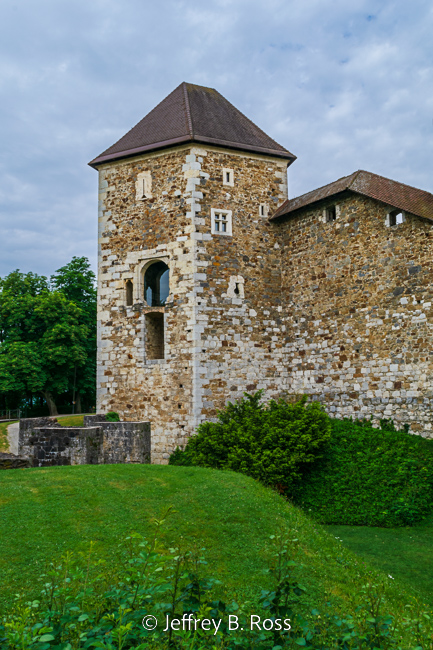
Southeast view of the Pentagonal Tower at the Ljubljana castle in Slovenia
From the courtyard, the more contrasting “modern” structures can be seen. While the climb to the top of the Clock Tower is a bit steep, the panoramic view is worth the effort for those who are fit to undertake the task.
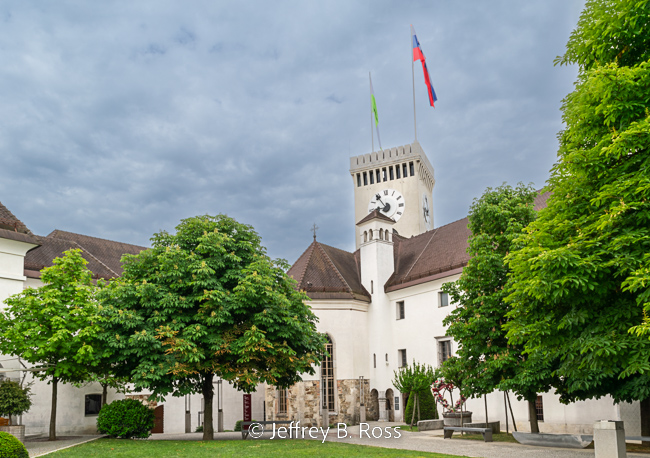
While making the “trek” enjoy the decorative spiral stairway.


* https://www.visitljubljana.com/en/media/news/ljubljana-is-the-european-best-destination-2022
Next stop – castle, cave and cuisine!
See Previous Posts in this series:
Dubrovnik, Croatia – Pearl of the Adriatic
Old Town Dubrovnik – Above it all
Old Town Dubrovnik – The Low Down
Dubrovnik from the Adriatic and Mt. Srd
Montenegro & The Walled City of Kotor
Mostar – Bosnia and Herzegovina
